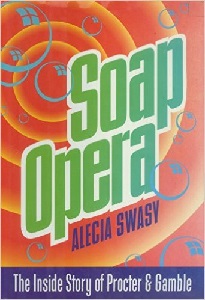
|
|||||
|---|---|---|---|---|---|

|
|||||
|
|
You've heard all the numbers before . . . 85% of Canadian babies wear disposable
single-use diapers, a total of some 1.7 billion diapers per year.
They chop down 2.4 million trees to make disposable
single-use diapers for Canadian babies making approximately 65,000 tonnes of wood pulp.
Then 77,000 cubic meters of non-renewable natural gas, per year, is used to make 8,800 tonnes of plastic and 9,800 tonnes of packing material.
Finally, 250,000 tonnes of disposable
single-use diapers and their contents end up in our already over-flowing landfill sites each year.
At 2.5 per cent of our residential waste, this costs $25 million to haul away.

Diaper Changes: The Complete Diapering Book and Resource Guide |
What does all this environmental concerns mean to you and your baby?
In reality, will it make any significant difference if you decide to use disposable
single-use diapers, and leave the cloth diaper decisions to someone else?
To bring our environmental concerns right to your door-step, so to speak . . . first, imagine chopping down the four or five trees closest to your home.
That's how many trees you'll need to to make the 500-1000 kg. of fluffy wood pulp your baby will use in 2 1/2 years.
Bleaching this fluffy wood pulp with chlorine gas to give it that desirable bright, white look will produce toxic chemicals, such as dioxins and furans, that will make their way into your neighbourhood air.
And don't forget to add those super-absorbent polyacrylate crystals that manufacturers say are safe, but which have been implicated in severe skin reactions, oozing blood, fever, vomiting and chemical burns.
Then you'll need over 2,800 cubic meters of non-renewable natural gas to make 325 kg. of plastic for the waterproof backing and packaging.
Changing a total of 6,000 disposable
single-use diapers over 2 1/2 years will have cost you over $1,560.00!

Soap Opera : The Inside Story of Procter and Gamble |
After the one to three hours it takes for your baby to soil this diaper, you remove it and . . . will you rinse it in the toilet, as the manufacturer suggests - right on the box?
Then you'll be adding 214 pounds of raw fecal matter into our landfill sites which are NOT designed to handle human waste.
Further, as many as 100 viruses can survive in your baby's soiled diaper for up to two weeks, including live polio viruses, excreted by your recently vaccinated baby.
So you fold up this disposable
single-use diaper into a neat package, and toss it into your household garbage, making up over 27% of the garbage you carry to the curb each week.
You'll have to add another $250.00 in taxes to cover the fees to haul those disposable
single-use diapers to your already over-flowing landfill site.
Now, imagine having to bury all those 6,000 disposable
single-use diapers right in your own backyard - where they will sit for over 500 years!
Hopefully this won't attract the bugs and vermin the landfills do, but just take a look around your imagined neighbourhood.
Chemically-polluted air, treeless and filled with garbage . . . . because, of course, 85% of your neighbours decided to leave the cloth diaper decision to someone else too!
Certainly disposable
single-use diapers are convenient, especially away from home. But this convenience comes at a price both you, as a parent, and society are finding increasingly onerous.
Parents have been deluged by confusing studies and advertising from the 'disposable' diaper industry. Parents should remember that reusing materials is the best way to prevent waste and conserve resources. PERIOD!
- Environmental Action Foundation, Washington, D.C.
This article compliments of Born to Love.
Send questions, comments, and suggestions to: catherine@borntolove.com
Born to Love articles are written by Catherine McDiarmid-Watt
Born to Love is a participant in the Amazon Services LLC Associates Program, an affiliate advertising program designed to provide a means for sites to earn advertising fees.
NOTE: All logos, company names, brands, images, trademarks and other intellectual property are the property of their respective owners.
Born to Love is a participant in the eBay Partner Network, an affiliate advertising program designed to provide a means for sites to earn advertising fees by advertising and linking to eBay.com.
Copyright © 1978 - BorntoLove.com - All Rights Reserved.
Last updated - April 5, 2024